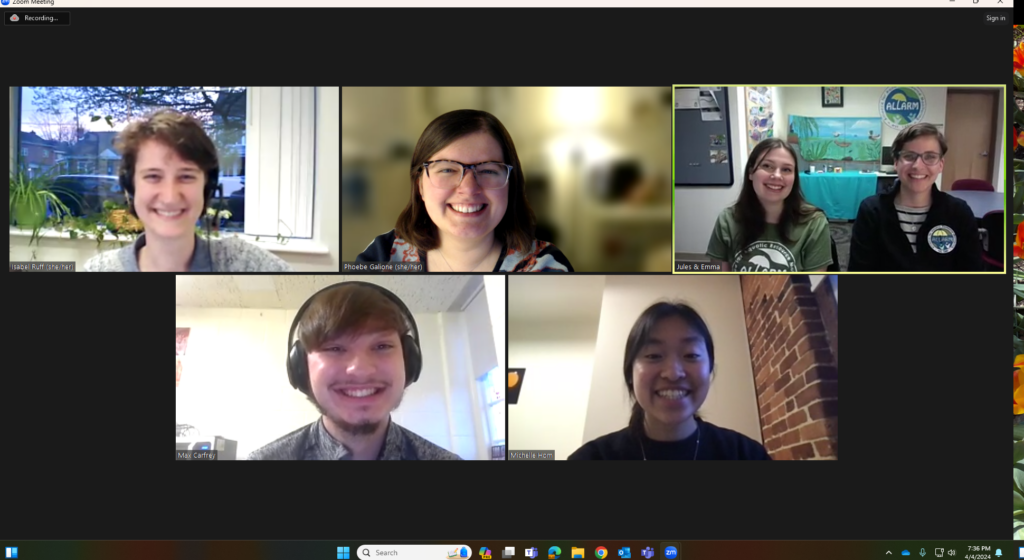On Thursday, April 4th, Michelle Hom (’24) and I virtually attended the Stream Team Data Orientation meeting that was hosted by ALLARM and facilitated by Jules Vastine, Phoebe Galione, Isabel Ruff, and fellow watershed coordinator Emma Spinelli (’25). This virtual event aimed to give volunteers a primer into information that would be helpful in informing the data interpretation process as they looked at the data they have collected for any trends or surprises. During the presentation, water quality influencers, the Clean Water Act, water quality criteria, and the ALLARM-created data packets (including maps for data interpretation) were all discussed and utilized to give our volunteers an informative session to prepare them to analyze their own site’s data.
For this event, I served as a notetaker in hopes of capturing important insights from the meeting as well as volunteer’s questions – so while I didn’t have to prepare to present, I made sure to bring a positive attitude to the call and was looking forward to learning from my colleagues and the volunteers! A highlight for me was hearing my colleague Emma Spinelli talk about the Clean Water Act and the importance of how it ties into the work we do here at ALLARM. I had the privilege of listening to her present a couple weeks prior at the class visit we attended together, and it was captivating to hear about her research again! I also really enjoyed Phoebe’s section covering water quality influencers since I had presented similar content recently, so it was cool to be on the receiving end of information to get a different perspective.

Overall, the volunteers who attended seemed to be enthusiastic about diving into data interpretation once we had finished the call. They asked some super interesting and important questions that make it clear how much they know about their sites and what they anticipate seeing in their data. Something I learned from the event is that it is tricky to begin this process if you don’t know where to start since there are specific qualities you must look for when examining parameters. A favorite memory of mine was the discussion part of the presentation because I was able to hear some of the volunteer’s voices and their passion behind monitoring their waterways. Speaking with my fellow watershed coordinator, Emma Spinelli, she told me, “This was my second workshop of the semester and one I was really excited to be a part of and present in. I focused on policy around water quality standards and Chesapeake Bay health, making connections to why ALLARM procedure looks the way it does and how volunteer’s data contributes to larger-scale monitoring of progress. It was an empowering experience to present and a great opportunity to connect with our volunteers.” This event was my first virtual meeting with our volunteers so I was also super excited, and it was very special to me—I can’t wait to see what findings the volunteers discover!
